I bought the Oura ring in March of 2019. After seeing many of my friends wear one and raving about it, I decided to see what the hype was about.
The Apple Watch never appealed to me because I like to wear mechanical watches and I couldn’t see it replacing that. The shape of a ring, which is an accessory I don’t wear, was appealing to me because it is small and innocuous.
After the first year of wearing an Oura Ring, I’ve raved about it on The Productivity Show. It has made it into our gift recommendations and one of the top favorite purchases of the past year. However, I’ve never shared on the blog or podcast specific details of how the Oura Ring has impacted my health, energy, and productivity. So that’s what this post is all about. Here are seven things I learned about myself after tracking almost three years of data.
1. How Much Sleep I Need To Feel Superhuman
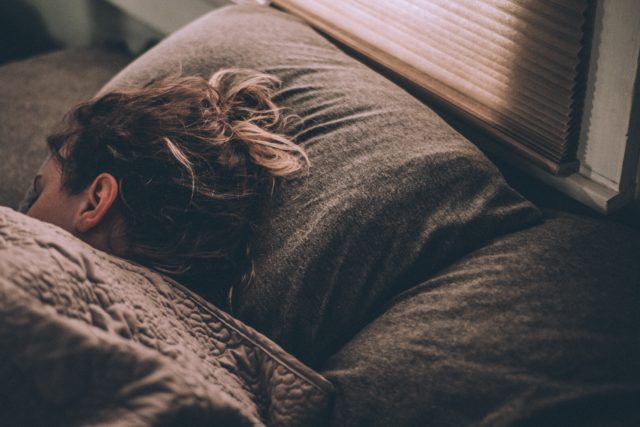
In the TEA Framework, our productivity methodology, we share how Energy (E) is a major component for your productivity. Sleep is the biggest contributor to that.
Before having an Oura Ring, I superficially knew the value of good sleep. When you watch a bunch of YouTube videos on sleep, listen to a few The Productivity Show episodes, and read productivity blogs you’ll see most people mention the importance of sleep.
But when you cannot measure it, at least for me, it falls on deaf ears. It might go in one ear and immediately leave the other ear. I used to guess that I needed about 7.5 hours of sleep to feel good but I never knew if that was factually correct.
That’s where the Oura Ring came in handy. With its sleep tracking feature, it can give you a detailed breakdown of your last night’s sleep of how much light, REM, and deep sleep you had. The more it tracks your sleep (and other biomarkers), it can learn over time what is considered good/bad sleep for you.
After wearing the Oura Ring for a few years, my guess of 7.5 hours was pretty spot on. More specifically, I need 7.5 hours of bedtime which usually results in anywhere between 6h30m and 6h45m of sleep time. That’s because you also take time to fall asleep, to wake up, and throughout the night get awake too for brief periods (without you realizing it consciously). In other words, as long as I’m in bed for at least 7.5 hours, I should have plenty of time to get a good night of sleep in.
Another interesting insight I got is how inconsistent my sleep quality was. Some nights I would sleep great and other nights it would be poor. Even on days when I thought I did all the right things, it could still lead to a poor night of sleep.
After journaling and tracking hundreds of days of sleep, I think I figured out how to consistently have a good night of sleep. Before tracking my sleep, I would recommend having an evening ritual that’s anywhere between 30-60 minutes before bed to get yourself ready for a good night of sleep. This consistency will help you get ready for bed and a good night of sleep most of the time.
Now that I have almost 1,000 nights of data, I would push it further and say that the three hours leading to your bedtime are crucial for your sleep quality (more on that later in this post). If my last three hours of the day are filled with physical activity, eating, stress, or mind-stimulating thoughts, it’s almost impossible to have a quality night of sleep.
An evening ritual can help minimize the damage but it won’t be enough to set yourself up for quality sleep. Ideally, the three hours leading to your bedtime are relaxing, without eating much food, and non-stimulating. This could be lots of brain dumping (journaling), no screen time, and no bright lights.
Sleep is the biggest force multiplier for productivity. When you had a great night of sleep, you feel energized to get your to-do list done, can focus for long periods, and procrastinate less. Thanks to tracking my sleep, I feel more empowered about my ability to be productive every day.
2. My Daily Step Count Is Dangerously Low
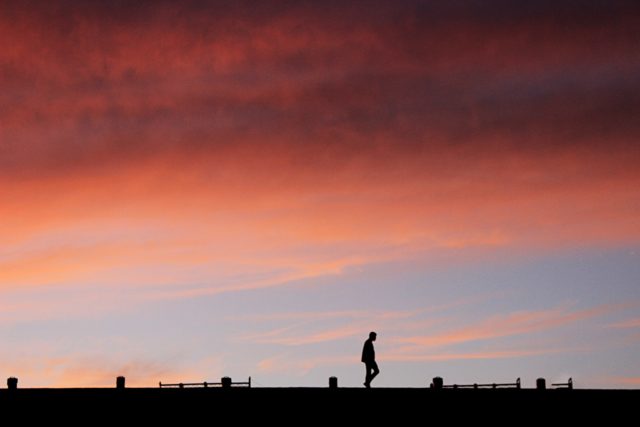
Since 2011 when Asian Efficiency got launched, I’ve been working from home exclusively. The WFH life has many benefits like working in your favorite sweatshirts, not doing your hair before noon, and your fridge filled with your favorite snacks only being a few steps away…it has a few downsides too.
One of the major ones is that your daily movement might be very limited. Especially if you live in a small home as I do. Everything is within reach within a few steps which means that I walk very little each day.
It’s easy for me to have days where I might average 3,000-4,000 steps in a day when I’m focused on work and nothing else. To put that in perspective (source):
- A server/waitress might average 12-14k steps during their 8-hour shift.
- A nurse might average 6-8k steps during their 8-hour shift
- A police officer might average 4-6k steps during their 8-hour shift
These numbers don’t include all the steps outside of their roles which could easily be another 3-5k step.
And I averaged not even anything close for a whole day?!
While the science behind 10k steps a day is a little fuzzy, it’s a nice round number to encourage people to move more without being exact on what people need. Most of us don’t nearly move enough and the Oura Ring highlighted that for me too.
On days when I’m not focused on work as much, I typically average 5-6k steps a day. I would be walking to the gym, running errands, and misc things. That’s still not much.
One month I set a goal for myself to average 10k/steps a day. Knowing that I would have 3-4k days to get focused work done, I would have to find ways to get 15k+ days in. Living in Austin and nearby a trail luckily made that somewhat easy for me. I would go for long walks every day. If I felt energetic, I would push myself to go the extra mile (literally). I would often have meetings with my executive assistant on the phone and I found myself listening to more audiobooks and podcasts while walking.
On days when I might be busy or lethargic, I would find ways to walk more around my own home. Instead of doing meetings behind my computer, I would do them on my phone and walk back and forth between rooms. Anytime I had a break, I would walk around to increase my step count.
The funny thing was, once I set my step count goal, I saw all these new opportunities to move more. They were always there in front of me but I never recognized them. This is a powerful reminder to always remind me of my goals because then I can recognize opportunities to progress that I otherwise wouldn’t see.
The byproduct of walking more is that I lost weight, my body was the leanest in a long time, felt more energetic and it was a nice way to get out of a routine. Anytime I’m in a funk, I know a walk can immediately fix it. It also reminded me to take more breaks.
There were a lot of carryover effects into work and my mood so I keep it up as much as possible. While 10k steps a day is a stretch goal for me, I know that when I’m below 8k steps a day that I had a sedentary day. Now I aim for four 10k steps a day in a week which usually helps me average above 8k steps a day over a week.
3. Going from “What is HRV?” to being obsessed with HRV
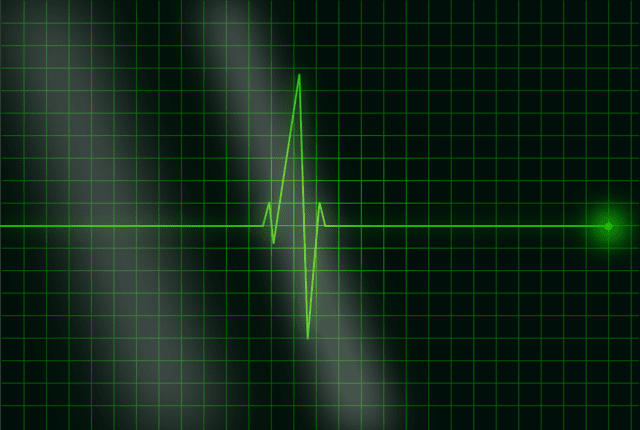
Before I had the Oura Ring, I’d heard the term “HRV” before but I never understood what it was. People would mention it’s a super metric to monitor for your health and longevity.
For everyday folks, it doesn’t mean much when you say, Heart Rate Variability. It’s never mentioned in our education or by our doctors so it’s an obscure measurement for most of us.
After almost three years of tracking, I’m now obsessed with HRV. I understand now how important this metric is. I have to admit that the first year of wearing the Oura Ring I wouldn’t pay attention to this metric. I was mostly focused on my sleep, step count, and Readiness Score (more on that in the next section). As someone who was already aware of the importance of these metrics, I was still learning a lot about them and how it affected me. That in itself was an education and I simply didn’t make the time to learn more about other metrics.
Once I got a grasp on my sleep score, Readiness score, and step count that’s when I could focus on other metrics. So I started to focus on HRV because I heard so much about it.
If you’re unfamiliar with Heart Rate Variability, here’s what it is (source):
Heart rate variability is a measure of variation in time (milliseconds) between your heartbeats. HRV provides a snapshot into how your body is balancing between the two branches of your autonomic nervous system: your sympathetic (“fight-or-flight”) and parasympathetic (“rest-and-digest”). Normal HRV can range anywhere from below 20 to over 200 milliseconds, depending on various factors such as age, gender, physical fitness, and genetics.
I recommend you read this page on HRV by Oura Ring to get an idea of what HRV is. The short version is that it helps you get insight into how balanced your nervous system is. The more balanced it is, the longer you live and the healthier you are. It’s a great indicator of your overall health status. Typically, the higher the better and you want this metric to trend higher over time.
When it’s out of whack, it’s a sign that something is off and that the nervous system is stressed. This could be:
- Dehydration
- Consumption of alcohol
- A late night meal or workout
- Illness
- Acute and prolonged stress
- A hot bedroom at night
- Jet lag and inconsistent sleep patterns
- Overtraining
All these lower your HRV and means it’s taxing on your body (more than it should be). That doesn’t mean you cannot ever consume alcohol (I love me a glass of Malbec) or travel time zones. It brings awareness that these factors often put stress on your nervous system and too much of it can have adverse effects on your health.
One mistake you want to avoid is to compare your HRV score to other people. I used to do this and quickly learned this score is all over the map. The Oura Ring team will also tell you that it’s different for everyone and there’s no minimum you must have to be considered “healthy”. I’ve seen healthy people have scored in their 30s and 130s. The range is quite wide. What’s more important is that you find out what your own average is and then make that metric trend upwards over time.
When I first started, my monthly average was 32. That seems pretty low by in itself (especially when the range is 20-200). Nowadays it’s 41 on average. That’s a 30% improvement which is great and I’m continuing to find ways to make it go up.
Don’t be discouraged if you compare your scores to others and find them to be low in comparison. Everyone has their own score and what matters is that yours goes up over time. This gets especially tricky when you compare it to others who might use another device to track their HRV (like the Whoop). I’ve never done a side-by-side comparison of how they measure although I hope to do it sometime as a fun experiment.
I encourage you to start tracking your HRV whether it’s using the Oura Ring, Whoop, or some other device. I’m a firm believer in the importance of this biomarker and I wish I learned about it sooner.
4. The Power of Algorithms
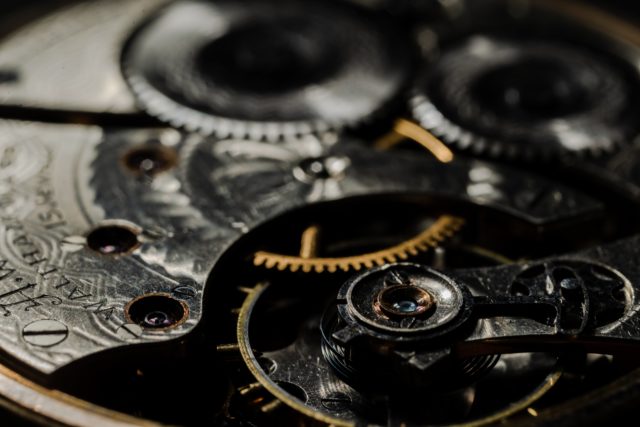
One of the interesting characteristics of today’s browsing experience is that websites personalize your experience. When you go to Facebook.com, you’ll see a different front page than I do. The same thing is true with search results on Google.com. An algorithm is running in the background to give you what it thinks you want to consume.
This also happens on the apps we use. What you get recommended in various apps is very personalized and it’s an algorithm feeding you what might interest you.
Algorithms are becoming more prevalent in how we navigate the world. Obviously, the Oura Ring has tons of algorithms to measure and score your biomarkers. One of the most useful ones I’ve found is the Readiness Score. It’s unique to the Oura Ring and it’s an overall score of your health on a scale of 1-100.
When I first got the Oura Ring I had no clue what it was and how accurate the score was. Fast forward to today and I’ve found the most useful metric to monitor. It’s so powerful and accurate that it’ll affect how I plan my days.
When I wake up, one of the first things I do is check my Readiness Score. If it’s over 70, I continue my day as planned. I feel energetic enough to do anything I want without pushing myself. If it’s over 85 (which is considered excellent), sometimes I push myself to walk 15k steps or get a second workout in for the day. I might work longer hours because I know I’ll have so much energy to do things and I want to capitalize on that.
However, if it’s between 60 and 70 I’ll rearrange my day to be less intensive. That range usually is an indication that my body is stressed and I’ve found that I’m not productive on those days.
I’ll skip or move my workout to another day. My deep work gets moved to another day and I’ll tackle more light activities for the day. My expectations for the day are lower than normal and I plan on incorporating more recovery-based activities like stretching, going to the sauna, going for brisk walks, and such.
If it’s really bad (under 60), it’s either because I’m getting sick or I had a poor night of sleep. If it’s the latter, I’ll try to go for a 90-minute nap in the afternoon to make up for it and that usually fixes that. I’ll have a second wind to be productive.
Otherwise, it’s a sign that I’m getting sick. When there’s an important deadline, I might push myself to get it done and I have a whole protocol to get things done while I’m sick. But most of the time I’ll call in sick and rest up.
As the Oura Ring is able to track more data, it gets more accurate (makes sense) and the Readiness Score is a reflection of that. I’ve found it to be so helpful that if they stripped all other metrics, I would still want to have the Oura Ring. It’s that useful.
5. Which Drinks Affect Your Sleep
Did you know that certain drinks will negatively affect your sleep?
I was oblivious to this until I started tracking my sleep. Some nights I would have amazing sleep and other nights, for no obvious reasons, my sleep score would tank.
Over time I noticed my sleep score would go down because I went out the night before. I had a suspicion that alcohol would be the root cause. Lo and behold…it was. Anytime I had a drink within 3 hours before bedtime, my sleep score would be negatively affected. The more drinks, the worse it would be. My heart rate would be elevated, my body temperature would be higher than normal, and my REM and deep sleep would be shorter.
All of these led to worse sleep scores. One time I tried to have only one sip of a cocktail and it still negatively impacted my sleep. My body is that sensitive I guess! To put it in context, I consider myself a social drinker. At home I never have a drink, it’s only when I go out for dinner or a night out. I might average 2-3 drinks a week.
So I thought I was doomed. I accepted that anytime I would go out for drinks that my sleep and Readiness Score would be sacrificed. Part of me was very sad about that and didn’t want to accept it. I started researching anything I could do to have a drink and still sleep well.
This rabbit hole led down to learning about NAC and glutathione. They’re anti-oxidants that you can buy as supplements over the counter that help you detox. They’re often found in IV bags. You might have seen people get IV drips at the Las Vegas airport to help them recover from a hangover. The magic ingredient is glutathione that helps with that (among many other things).
So I started taking glutathione and its precursor NAC before going out for drinks. After trial and error, I found out that for every drink, I needed to take one capsule of glutathione and my sleep wouldn’t be comprised as much. My sleep wouldn’t be perfect but it severely limited the damage.
I also tried to have drinks earlier in the evening so that my body would have more time to digest them before I went to bed. Combined with glutathione that seems to be a winning strategy. For example, I could have my last drink at 6 pm and go to bed at 11 pm and generally be fine the next day. This is not always possible but if I’m the one organizing the get-together I would sneakily keep that in mind.
One day, my friend introduced me to Clase Azul. It’s a high-end tequila and I love me some tequila (and mezcal). It tasted so good with a hint of vanilla and I only had one glass. I remember going home realizing it was within 3 hours of my bedtime and I was out of glutathione. Mentally, I was ready for my sleep and Readiness Score to be sub-optimal the next day.
When I woke up checked my score, I saw my scores went up compared to the day before.
I was shocked.
“WHAT?! HOW IS THIS POSSIBLE?”
Is Clase Azul some magic potient? Going forward, anytime I went out, I started ordering Clase Azul and noticed my sleep not being disrupted at all. I thought I hit the jackpot.
Another time, someone poured me a glass of Malbec. I knew from my experience that red wines and Malbecs would negatively affect my sleep. So you should have seen my facial expression when I woke up the next day and my sleep and Readiness Score weren’t impacted by that glass of wine (that I had multiple of). I immediately texted my friend to ask for the specifics of that bottle.
Over time I’ve learned that certain brands of liquors, spirits, and cocktails don’t affect my sleep. It’s a work in progress and I keep a weekly journal of my Oura Ring insights to discover what works for my body and what doesn’t. I have a running list of my favorite drinks that are Oura Ring friendly and this is a very freeing feeling to be able to have drinks and not feel like it’s negatively impacting my health or having to sacrifice anything.
At some point, I want to try a continuous glucose monitor to take this a step further and thanks to the Oura Ring it has given me a headstart on insights that are empowering.
6. Timing Matters
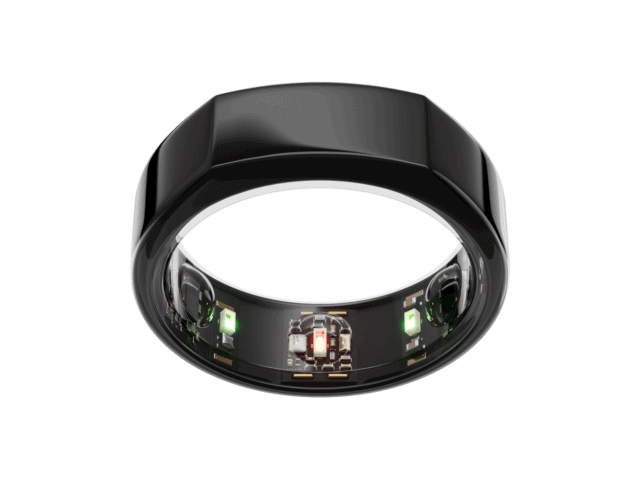
One discovery I made is that meal timing has an impact on your sleep. If I have a large meal before bed, my sleep and Readiness score go down quite a bit.
Why?
My body is focused on digestion rather than recovery during the sleep phase. Ideally, when you sleep your body is trying to do all of its magic (healing, repairing, recovering) and not digesting food. In the Oura Ring, digestion of food during sleep will result in elevated heart rate and body temperature. Your total REM and deep sleep are also shorter than your average.
Through several experiments, I’ve found that I can eat around 200-250 calories before bed without it affecting my sleep. I do avoid sugary foods as I don’t want to spike insulin late at night and anything caffeinated for obvious reasons. Anything more than 250 calories typically shows up in the Oura Ring app as comprised sleep.
Ideally, my last meal is more than three hours before bedtime. The more hours the better. Typically I finish my dinner at 6 o’clock and sleep around 10 or 10.30 pm. That gives my body enough time to digest and give my body full focus for recovery during sleep.
One interesting observation I’ve made is that I have over 800 calories of food in one sitting, I feel sluggish afterwards. Whether it’s breakfast, lunch, or dinner – it has the same effect. I want to avoid it most during dinner because it might impact my sleep. I’ve seen over and over again that when I have a big, fatty steak at night with side dishes (that’s easily over 800 calories) my sleep that night is terrible. Even if I have 3+ hours to digest. For some reason, my body is very slow at digesting steak and big cuts of meat. So I try to avoid eating big steaks at night (even though I enjoy them so much).
At AE we’ve talked for years about having an evening ritual to help you fall asleep. The Oura Ring showed me that lowering your heart rate as you get ready for better helps with improving your sleep score. It makes sense. The lower the heart at night, the less energy is required for the body to relax and start recovering during sleep. I could never explain this until I saw the data in the Oura Ring.
The Oura Ring can detect whenever you’re resting (typically when your movement is low) and it’ll show you in the app your lowest resting heart rate. I’ve learned over time that if it’s in the 70s, I’m too alert and I need to actively focus on lowering it. I could do the legs up the wall stretch to calm myself down and/or use the Apollo Neuro to do that.
However, when I see my lowest resting heart be in the 60s, then I know I’m relaxed and that I’ll likely have a good night of sleep (when my lowest resting heart rate is usually low 50s or high 40s). Everyone is different in this sense so observe what ranges work best for you.
The final aspect of timing that’s related to this for me is social interaction. As an ISFJ (introvert), when I’m around a group of people late at night, it takes me forever to fall asleep. My brain is engaged, my heart rate is up a little, and when I try to sleep right after I come home it never seems to work. When I do fall asleep, it takes a long time for my heart rate to calm down which results in a lower Readiness Score.
So to combat that, I have to remind myself to follow my evening ritual even if I come home late. I’m the type of person that will always wake up at the same time no matter what time I go to bed. So I used to think that skipping my evening ritual will result in more hours of sleep (true) but the quality of sleep was terrible.
Recently, I flipped it around. If I came home late, I forced myself to follow my evening ritual (takes about 30-45 minutes) and then go to sleep. I might have lost about an hour of sleep but the quality of sleep (my sleep efficiency in the Oura Ring) was higher compared to when I didn’t follow my evening ritual.
If there’s a takeaway from all of this, it’s this: what you do in the last 3 hours before bedtime affects your sleep. Ideally, relax and avoid social interactions, exercising, and big meals.
7. Misc Insights
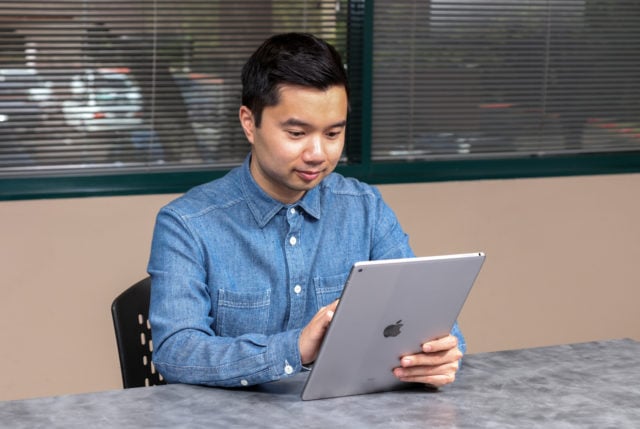
Every Sunday when I do my weekly review, one question I ask myself is:
“What Oura Ring insights did I discover?”
For the last 18 months, I’ve kept a log of what I’ve discovered. Some of this might only make sense if you have an Oura Ring and others might be helpful to some of you. In no particular, here are some:
- L-theanine + magnesium are the best supplements for great sleep for me
- Anytime I do a float tank, my REM sleep that night goes through the roof (2h+)
- Using the Theragun for 5-10 minutes on my upper body helps me sleep better at night
- You can jump +20 in Readiness score by sleeping 9+ hours
- Taking glutathione and NAC (precursor to glutathione) before drinking helps prevent hangovers
- Turn on the fan during the night if I had drinks to help cool off my body faster for better recovery. My body temperature at night is always elevated when I have had drinks.
- I always wake up at the same time (6.30am during fall/winter season, 7.30am during spring/summer season) no matter what time I go to bed.
I can’t guarantee that any of these make sense to you but maybe there are some ideas for you to experiment with. However, what I do recommend is keeping a log of your insights. Had I not written them down, I would have forgotten about them and lost so many lessons. What’s the point of tracking all the data if we’re not learning from it and applying it?
Conclusion
The Oura Ring is a powerful wearable device for measuring biomarkers. It has given me many insights I had always hypothesized but could never verify with data. Now I can. I enjoyed writing this post because it allowed me to synthesize all my insights, lessons, and data into something I can reference myself.
I hope you found this helpful. If you don’t have an Oura Ring yet, click here and get yourself one. If there’s one wearable device I can recommend, it’s this one.
Once you have it, keep a log of your lessons and insights somewhere. I put mine in Evernote and discover what works and doesn’t work for you.
